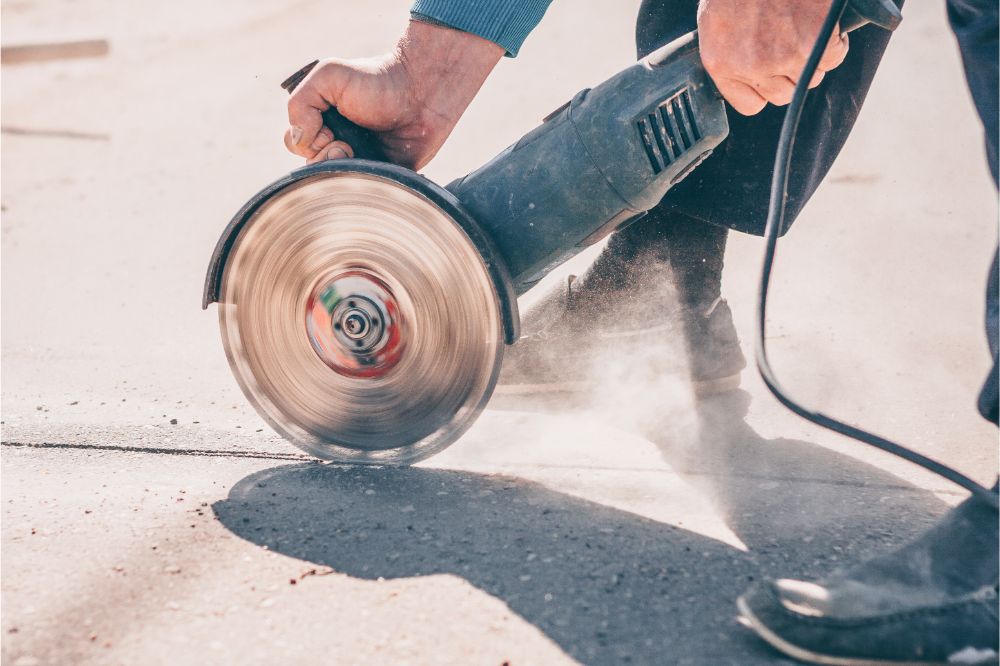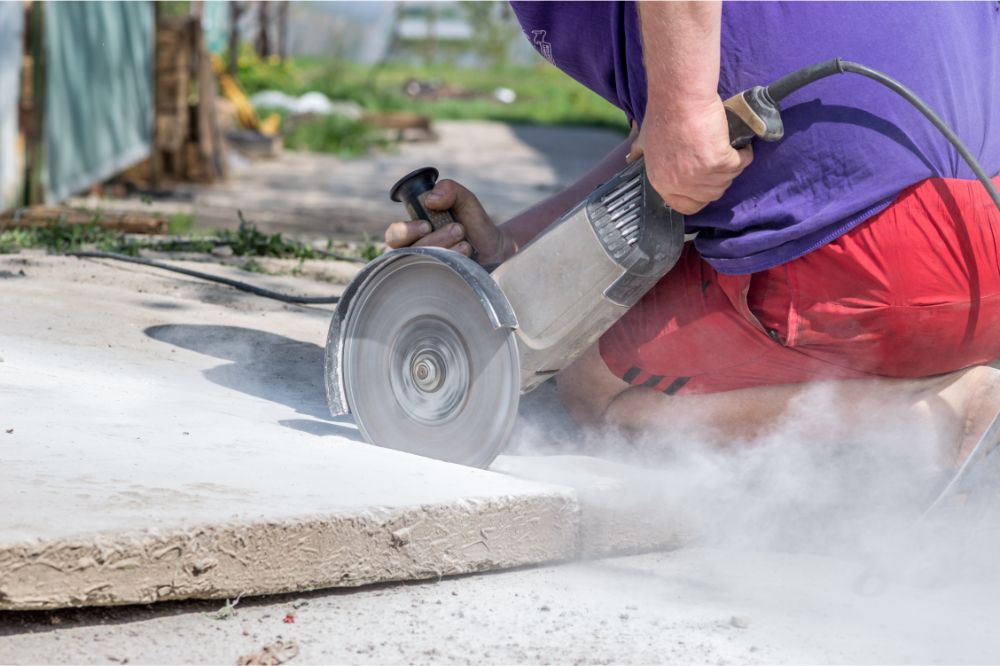Dealing with concrete is a common occurrence in most building and construction projects. Resizing, reshaping, or cutting through basic concrete building materials like blocks and slabs can be an extremely labor-intensive task that requires an appropriate tool to help you along. Angle grinders are often chosen as the go-to tool for alterations to concrete, and rightfully so.
These versatile machines are popular because they’re practical and beginner-friendly. When used correctly, angle grinders make the task that much easier. However, working on concrete with an angle grinder differs from other common surfaces such as metal. Therefore, subtle changes are also required to your usual angle grinder setup.
Below, we are going to take a look at what you need to know about working on concrete with your angle grinder to make the process safe and simple. So without further ado, let’s jump right into it.
Purposes of an angle grinder
Different types of jobs may require additional equipment to complete the task effectively, and identifying the requirements for your task will help you prepare adequately.
Below are the most common tasks that angle grinders are used for on concrete:
- Clearing – Removing old adhesives or soft matter from the concrete surface
- Thinning – Usually over cracks that cause tripping hazards or breaks in the paint
- Flattening – Of uneven surfaces such as floors
- Grinding – Removing hard outer coatings that may appear on the surface
Preparation
When working with concrete, it’s important to take the time to prepare yourself, your workspace, and your equipment beforehand. Sufficient preparation makes your work easier and safer:
- Safety wear – PPE
- Safety goggles – For protection from debris and sparks.
- Dust mask – To avoid inhaling concrete dust while cutting.
- Earmuffs – To help avoid damage to your ears and hearing.
- Boots – Safety boots are a workman’s essential and should be worn during any DIY.
task. - Gloves – These will help you maintain a steady grip and prevent minor nicks and cuts.
- Clothing – Ensure that your clothes are well fitted and that any hanging jewelry is removed. Tie longer hair up as well.
These are just some of the items you need to ensure you use when grinding concrete. Each job will have different requirements to consider.
Workspace
Preparation does not end at your apparel, though. Your workspace should be optimized to reduce the possibility of accidents like tripping and falling.
- Declutter the area.
- Pay attention to the floor and potential tripping hazards.
- Remove obstructions along the angle grinder power cable line.
- Make sure that glass and other breakable items are either removed from the area or covered.
Equipment
Once you and your surroundings are ready to go, it’s time to prepare your angle grinder and assemble the most suitable equipment for the job. When working with concrete, the disc you choose will make a major difference to the final outcome.
The most widely used attachment when working with concrete is diamond grit blades, and they come in three main types.
Segmented rim blades
These blades have space between the segments which contain small ventilation gaps. These gaps help ensure that concrete dust and debris do not build up on the disc and also help keep the blade cool. Segmented blades can be used for wet or dry cutting; however, they do not provide a smooth cut.
Turbo rim blades
These blades possess ventilation holes closer to the center, designed to draw out the debris while spinning. Turbo rim blades can also be used for wet or dry cutting, and since the blade doesn’t leave the surface, they provide a much smoother cut.
Continuous rim blades
Continuous rim blades are mainly used on fragile materials like tile or granite. They can only be used for wet cutting because they do not possess any ventilation holes and rely on water to cool the blades. Continuous rim blades are not recommended for grinding or cutting concrete.
Perhaps diamond blades can be a little more expensive than other disc types. However, they are extremely versatile and can be used for a variety of other jobs as well. In addition, these blades have an excellent lifespan if used and stored properly.

Grinding concrete with an angle grinder
Whether you’re trying to grind a drain groove or mark a radius in your concrete with your angle grinder, you’re going to need to pay attention and work in sequence:
- Step 1 – Mark your surface with the relevant guidelines.
- Step 2 – Prepare an extension power cord if necessary and check that there are no obstructions.
- Step 3 – Loosen the retaining nut (and remove the old pad if you already have one installed).
- Step 4 – Install your diamond blade.
- Step 5 – Thread the retaining nut back in place and tighten with the spanner wrench.
- Step 6 – Attach and lock your dust shroud in place.
- Step 7 – Warm up the angle grinder by allowing it to run for a minute or two.
- Step 8 – Hold the grinder firmly and set the disc down lightly on the area you’ve already marked. Do not apply too much pressure. Allow the disc to run while you guide it in your desired direction.
It’s always best to move the angle grinder away from you rather than toward you when grinding or cutting. This will cause any debris to fall away from you rather than rebounding directly at your face or body.
Disadvantages of using an angle grinder when grinding concrete
There are three main disadvantages of using an angle grinder when cutting or grinding concrete.
Grinders usually use discs that are between 4 and 7 inches wide. This means it can take a significant amount of time to complete when working on large surfaces.
When working on concrete floors with an angle grinder, you must be up close to the surface, which often means on your hands and knees. This can become uncomfortable after a while.
Since concrete is a much harder substance than wood, debris that chips off the surface can cause damage to your eyes or facial region quite easily. Sparks are also likely to be present during your work, so be sure your feet are well covered and avoid clothes that burn easily.
Grinding discs will naturally wear out more quickly when working on concrete since most angle grinders are created for dry usage. This is where angle grinders that use water have a slight upper hand. However, more modern designs have brought improved airflow mechanisms built into the blades and hybrid options, which significantly help the blades last longer.
Conclusion
Angle grinders are extremely versatile tools that can be used on various surfaces. Each surface requires specific attention to detail and the right equipment for the job. Grinding concrete with an angle grinder is possible to do. However, the process differs slightly from other surfaces. Preparation is extremely important since there are likely to be more potential dangers present.
One should take the time to prepare their workspace and equipment in advance to reduce danger and avoid distraction once you start working. When working on concrete, it is favorable to use a diamond grit blade which is designed to tackle difficult surfaces effectively. Finally, be sure to wear the necessary safety gear as a fair amount of concrete dust and debris is to be expected.

